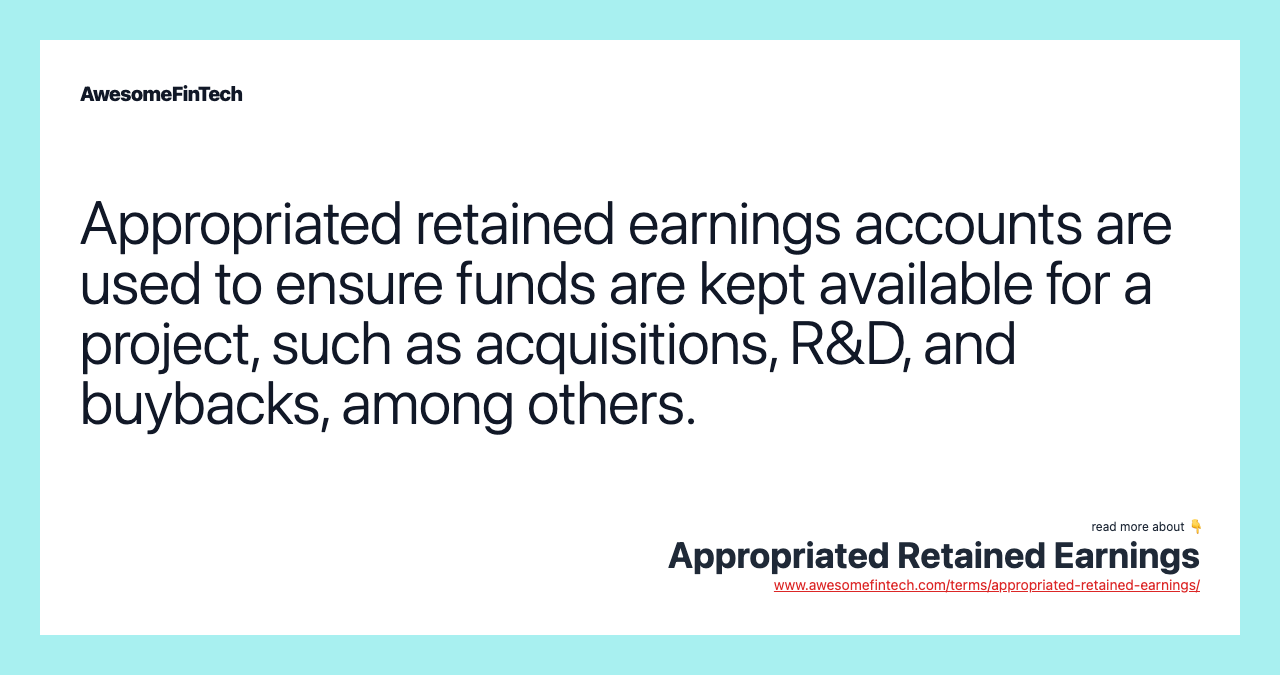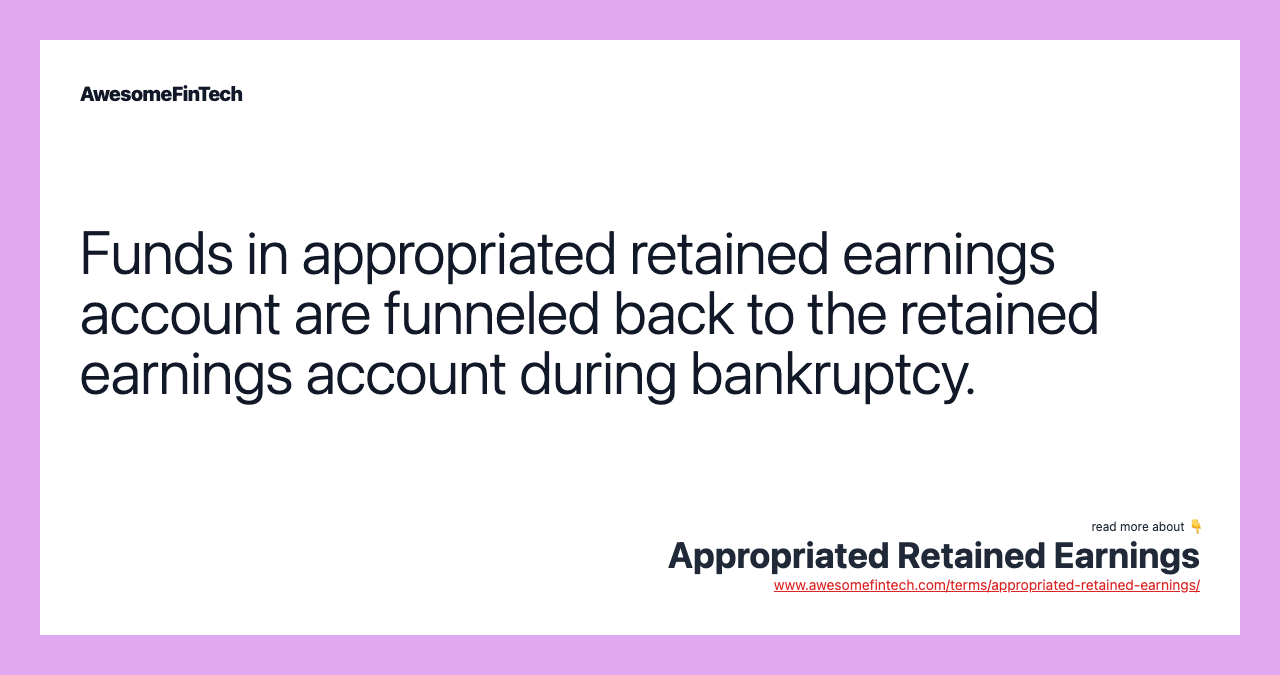Appropriated Retained Earnings
Appropriated retained earnings are retained earnings that are specified by the board of directors for a particular use. However, it does effectively create two retained earnings accounts, one for appropriated retained earnings and one for unappropriated retained earnings. There can be multiple accounts, such as appropriated retained earnings, research, and development process, or appropriated retained earnings lawsuit. Funds in appropriated retained earnings account are funneled back to the retained earnings account during bankruptcy. XYZ can then debit their retained earnings of $30 million and credit it to appropriated retained earnings.

What Are Appropriated Retained Earnings?
Appropriated retained earnings are retained earnings that are specified by the board of directors for a particular use. Appropriated retained earnings can be used for many purposes, including acquisitions, debt reduction, stock buybacks, and R&D. There may be more than one appropriated retained earnings accounts simultaneously.





How Appropriated Retained Earnings Works
Appropriated retained earnings are used to indicate to outsiders the intention of management to use the funds for some purpose. The designation, appropriation or restriction of these retained earnings does not serve some internal accounting function. However, it does effectively create two retained earnings accounts, one for appropriated retained earnings and one for unappropriated retained earnings.
For example, if a company wanted to set aside $20 million for the purchase of a new headquarters, the board would vote to appropriate $20 million of retained earnings for that purpose, and that amount would be entered into an appropriated earnings account on the books. Once the acquisition was complete, that amount would be returned to the main retained earnings account.
Appropriated retained earnings do not have the force of law. If a company were to go bankrupt, the appropriated amounts would return to the main retained earnings account and would be available to creditors and shareholders. It is called liquidation for a reason. They must liquidate anything and everything that they can, including these earnings.
Some companies create an unappropriated retained earnings account by funding the account without the intent of using the money for a direct purpose.
Special Considerations
It is very important to make sure that the bookkeeping is done properly with heavy notation. This will be seen by insiders, board members, investors, and potential investors. When crediting appropriated retained earnings, it’s important to notate which account is getting credited. There can be multiple accounts, such as appropriated retained earnings, research, and development process, or appropriated retained earnings lawsuit.
This practice is very important with appropriated retained earnings, but also very important with any other type of accounting practice. Imagine attempting to look over a practice like this when it does not have heavy documentation.
Example of Appropriated Retained Earnings
Appropriated retained earnings are designed to make sure that shareholders don’t have access to these funds. The reason is that if the company is trying to perform a large transaction, they want the investors and shareholders to know that it is going to happen. This is accomplished by debiting the retained earnings and then crediting appropriated retained earnings.
For example, company XYZ has been growing at a rapid rate and needs to move into a larger building to accommodate its workforce. The new building is going to cost $30 million. XYZ can then debit their retained earnings of $30 million and credit it to appropriated retained earnings. Once the new building has been completed, XYZ can debit appropriated retained earnings and move it back over.
Appropriated retained earnings are not just used for buildings. It can be utilized for many different reasons, including:
Related terms:
Accounting
Accounting is the process of recording, summarizing, analyzing, and reporting financial transactions of a business to oversight agencies, regulators, and the IRS. read more
Acquisition
An acquisition is a corporate action in which one company purchases most or all of another company's shares to gain control of that company. read more
Appropriation
Appropriation is when money is budgeted for a specific, particular purpose or purposes. read more
Dividend
A dividend is the distribution of some of a company's earnings to a class of its shareholders, as determined by the company's board of directors. read more
Non-Controlling Interest
Non-controlling interest is an ownership position where a shareholder owns less than 50% of a company's shares and has no control over decisions. read more
Payout Ratio
The payout ratio, or the dividend payout ratio, is the proportion of earnings paid out as dividends to shareholders, typically expressed as a percentage. read more
Retained Earnings
Retained earnings are a firm's cumulative net earnings or profit after accounting for dividends. They're also referred to as the earnings surplus. read more
Unappropriated Retained Earnings
Unappropriated retained earnings refer to any portion of company earnings that are not assigned to a specific purpose. read more